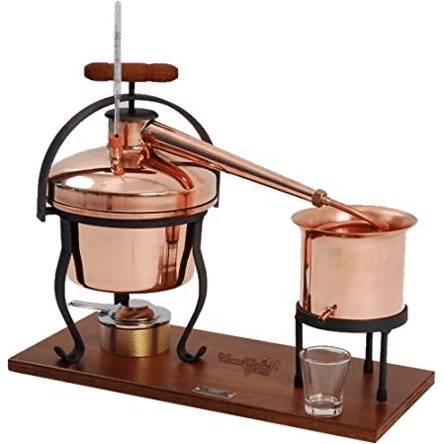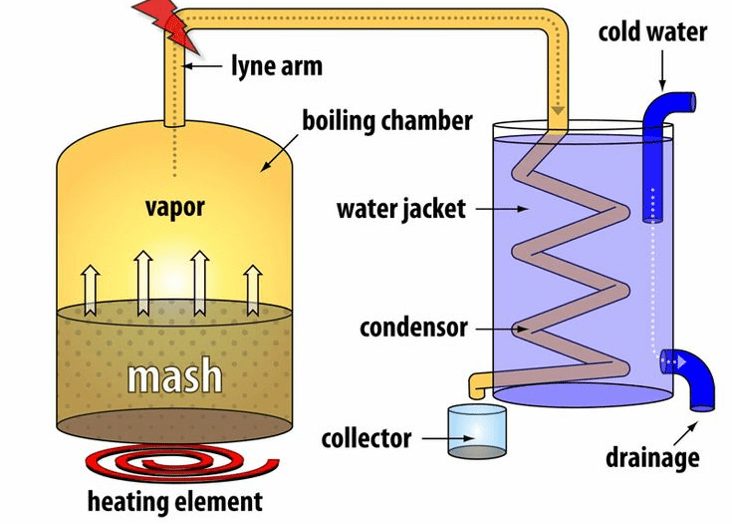Alcohol Distillation
Lesson Progress
0% Complete

use for sale on Amazon;
Copyright: Amazon UK
Equipment Needed:
- 1 pot still; these come in various sizes, size yours to hold the volume in your fermenter. A half-gallon to a gallon in size is good for beginners, but up to 5 gallons will work for home production. (Make sure it doesn’t have lead solder in it.)
- Hydrometer to check alcohol content
- Condenser
- Sealable glass jars
Process:
- For safety, use a water bath to heat the still to prevent danger of alcohol boiling over.
- Clean the still. If it’s copper, use a wet sponge and vinegar.
-

Figure 2 – Distillation process in a pot still Submerge the bottom of the still in the water bath, but prop it up on a piece of wood or something similar—don’t let it sit directly on the bottom of the water bath, as this might boil the mash.
- Fill the still three-quarters of the way with the alcohol base (corn mash or otherwise).
- Close and assemble the still, attach the condenser. Ensure all joints and seals are tight.
- Turn on the heat to the water bath, and turn on the water to the condenser.
- Safe distillation is a very slow process. Tinker with your system until you have the correct heat to allow 1 drop of alcohol per second to leak out. It will take a few minutes to get to evaporative temperature.
What comes out of the still? Four types of liquid:
- Foreshots: The first liquid out of the still is full of acetone and methanol… which could kill or blind you. They have a lower evaporation point (134°F and 147°F respectively) than the alcohol you want. They will be in the first 8.5 ounces out of a 5-gallon still. Don’t drink this. Throw it away. (Throw away anything that comes out of the still before it has reached 172°F.)
- Head: While less toxic, the head does have methanol in it. Unless you are an experienced distiller, throw this out as well. (It can be redistilled, but don’t try this until you are proficient.)
- Heart: This is ethanol—the good stuff. Ethanol evaporates at 172°F (77.8°C). Keep your still mash as close to but not under this temperature.
- Tails: This has too much water in it and can impart a bad flavor. Throw this away, too.
Wash your still and re-run the heart through the now empty still to get it extra clean and pure. With practice, you’ll learn when and how much of each alcohol is produced. There are some visible differences, as well as differences in smell and taste.
